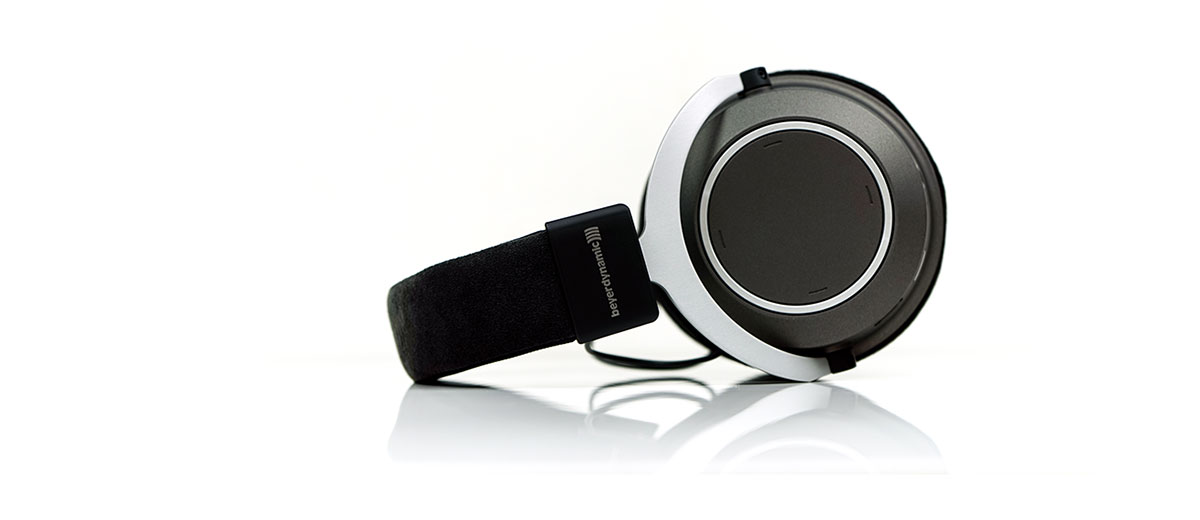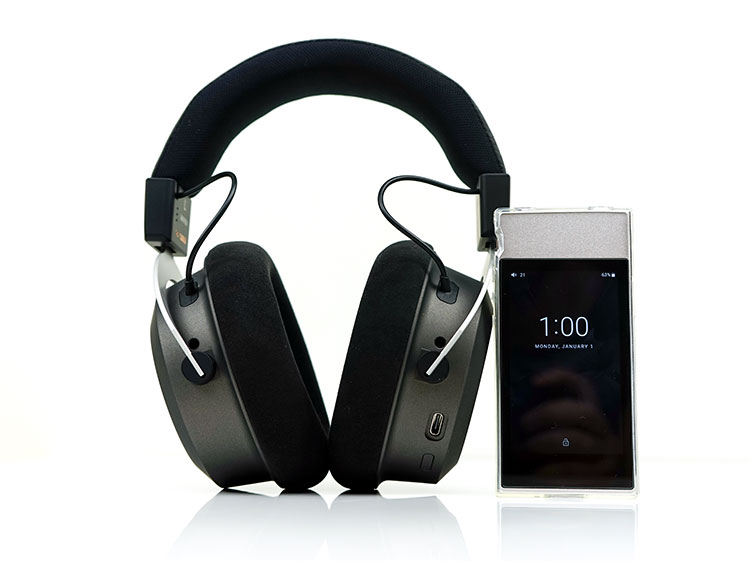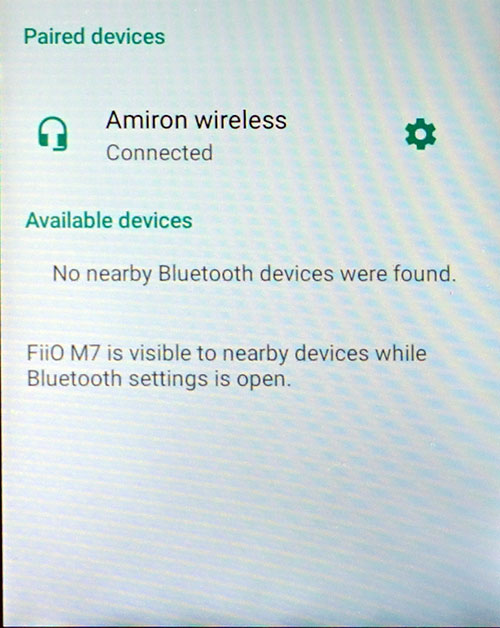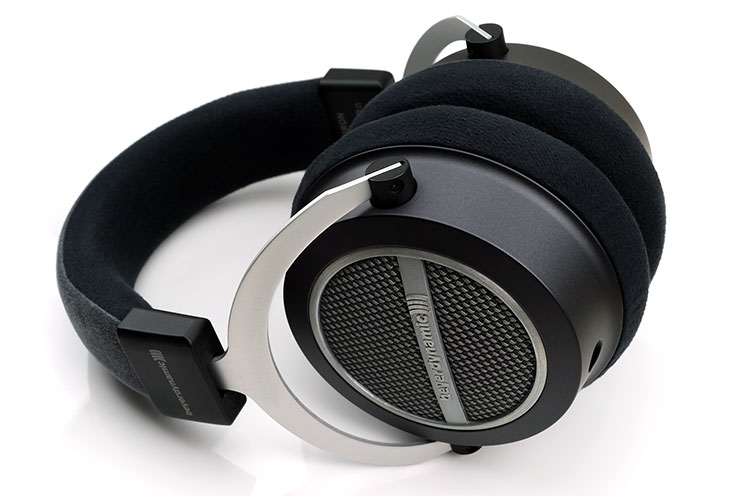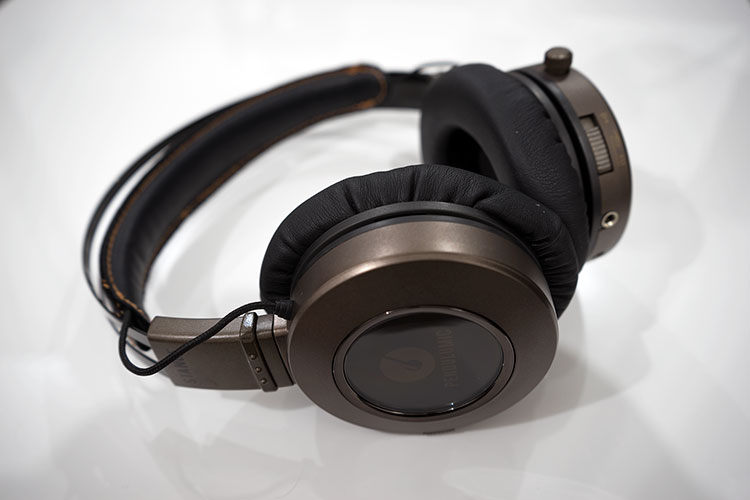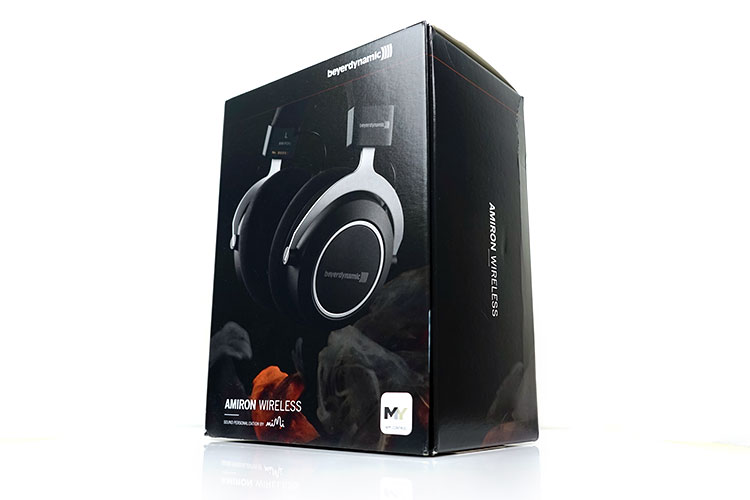Sound Impressions
Summary
The closed-back design of the Amiron Wireless produces some unsurprising results in terms of tonality and tuning bias. Closed-back designs can often exhibit a little bass density and this is the case with the Amiron Wireless compared to the wired open-back version.
This is a U-shaped presentation with a slightly warm-sounding signature that pulls from an elevated low-end with an emphasized bump around 100Hz.
Unlike the Amiron Home, there is less upper bass and lower midrange emphasis. I found the lower-mids up to 2k to be quite linear sounding and fairly neutral.
The Wireless edition shows a fairly sharp but brief dip around 3-5k and then a bump from 5-8k though I find the treble emphasis to be quite balanced sounding and certainly nothing sharp. Beyond that, the Amiron Wireless starts to attenuate with only a minor traditional last-gasp 11-12k bump.
There is a considerable difference between the level of clarity between going wired and going wireless with this new closed-back Amiron. You will find that going wired has a better treble presence, a slightly more neutral timbre, and a more spacious sound with a better dynamic range.
Staging
The Amiron Wireless offers a fairly good but rounded soundstage for a closed-back circumaural headphone. It does change a bit between the BT and wired connections. Width is perfectly acceptable for a closed-back design but I do find it to be more open-sounding with much better instrumental separation and clarity when wired rather than wireless.
Depth is good with decent sub-bass presence and power. That being said the slight mid-bass bias might distract from an otherwise good sub-bass performance.
Again, when wired, you get a punchier and tighter sub-bass response which improves the perception of depth. Wireless tends to soften it up a bit with that additional level of compression and starts to sound a little shallower.
Vocal positioning is more on the neutral side with that linear response, particularly on male vocals on rock/metal. Instruments that pitch on the low end up to 400Hz will have a bit more staging presence though vocals never sound like they are gasping for air or too far back in the mix.
The Amiron Wireless height is a little on the subdued side due to the more relaxed treble tuning. I would say about up to 5dB less energy than the Amiron Wired from 7k onwards so not quite as airy or sparkling sounding, perhaps a little on the darker side in that respect.
Bass
The Amiron Wireless has a solid well-defined low-end with a marked 60-150mHz mid-bass rise that tends to slightly outshine an otherwise elevated sub-bass response. When going wired I found the sub-bass presence to have a little more presence and power.
Going wired it was slightly softer and more neutral sounding with that mid-bass bump being the more noticeable of the two. It does have a fairly sudden drop thereafter to around 400Hz so the low-end warmth doesn’t travel too far up and muddy the lower-midrange retaining some vital instrumental clarity.
This is the type of bass response that works very well for adding some natural-sounding bass fundamentals into drums, guitar chords, and similar lower-pitched instrumental notes.
However, it is not a basshead dream so it is not going to dominate or sound overly gut-wrenching for EDM, Dub, and some R’n’B.
Mids
From 400mHz onwards the Amiron Wireless is surprisingly quite neutral and linear sounding to around 2k. The upper mids to around 5k on the lower treble is a bit dipped though in comparison. A little percussion energy and presence are missing from the presentation which adds to the slightly darker and smoother tone of the Amiron Wireless.
Instrumental and vocal timbre using aptX-HD is slightly on the warm side with an even-harmonic bias but not overly thick sounding. That sharpish dip into the lower-mids from the mid-bass peak puts a cap on too much bass bleed and muddies up the instrumental separation or clarity on the Amiron Wireless midrange.
Moving to wired the Amiron Wireless mids become a little cleaner, with a slightly better dynamic range. Instrumental imaging is a little easier to pick out with a more open and spacious sound. The even harmonic bias shifted a little to a more neutral tone though still fairly smooth on the ear.
Treble
I prefer the tuning of the Amiron Wireless treble compared to the original Home wired edition. There is a dip up to 5k then a peak at 5-8k but it is nowhere near as emphasized as the Home edition and actually very natural and relaxed sounding.
True, it is not as airy or energetic sounding as the home, is the darker sounding of the two. However, for casual long listening sessions, it is just perfect with a clever mix of body and slightly softened leading edges.
Going wired will produce a cleaner top-end though by some distance. You will find that clever tuning to be more impactful and impressive with that short cable attached. I did tend to find moving to aptX-HD from wired softened up the treble a bit too much for my personal preference.
That also has an impact on that upper mids dip, dulling the higher-pitched percussion timbre and robbing it a little of some ‘bite’ and presence.
Synergy
Bluetooth Connectivity
Pairing
Pairing with the Amiron Wireless is a painless affair. You should start by connecting it in the traditional manner via your source’s BT pairing service. Both my Sony 1Z and LG G6 found and paired the Amiron Wireless right away.
Voice Prompts
A rather prim-sounding female voice will generally act as a guide through any key events such as when changing from aptX to aptX-HD though the pace of being told what is happening is languid.
This means you lose a split second of audio while the change is being announced. For example, on my Lg G6, I can move from the most stable connection (aptX) to the best sound quality connection, (aptX-HD) on the fly. Doing this prompts the voice which invariably mutes audio for a second.
Dual Connection
The Amiron Wireless uses the BT4.2 standard which means you can hook it up to 2 sources at the same time. Again, picking out the Sony 1Z and LG G6 switching was a completely seamless experience. I simply stopped playing on one device and pressed play on the other and everything worked as it should do. Perfect!
Connection Strength
Connection strength was also excellent with no unexpected drop-out from close distances. Distance performance was class-leading from all sources tested including a FiiO M7, Sony 1Z, and an LG6 smartphone.
I can go about 5-6 meters with one wall between myself and the source and 8-10 meters without a wall easily before the signal drops out. That is as good as any BT4.2 device I have tested thus far.
Wired Synergy
Ratings
Going wired turns this into a 32Ω 100dB closed-back headphone. Not quite enough efficiency to sound great jacked out of a smartphone but easy enough to drive out of a good DAP or relatively capable desktop amp.
Despite the 2dB lower sensitivity rating compared to the Amiron Home, the wireless version does not scale quite as well. Nor does it need to. The Home edition is a 250Ω open-back headphone and far more demanding. 32Ω simply does not need the same amount of output wattage.
32Ω Legacy
beyerdynamic tends to come out with 32Ω editions of their DT and T series headphones such as the DT770 32Ω LE and the T5p. The Amiron Wireless should be treated as the same class of headphones albeit with a more balanced tuning than either.
The DT770 32Ω is far more bass-heavy and musical sounding and the T5p is the exact opposite, instead, focusing on some excellent upper mids and treble and virtually no bass without EQ.
DAP Preferences
The Amiron Wireless is far more mature in its tuning than the DT770 and T5P and will sound great out of most DAPs.
My preference was going wired with the iBasso DX200 with the Amp 1 card for its neutral reference sound that did not muddy up the Amiron Wireless’s low-end and the Sony 1Z for its clarity and excellent aptX-HD capability.
Select Comparisons
beyerdynamic Amiron Home
$599
Technical
The original Amiron from 2017 is an open-back 250Ω wired headphone, aimed primarily at the desktop amp audiophile. This is in contrast to the 32Ω closed-back wireless Amiron aimed at the mobile user.
Naturally, the key difference is the BT capability of the Amiron Wireless and its plethora of useful command functions for both audio and smartphone services. However, when both are wired you get a better sense of what each is capable of doing.
The build quality, save for some minor color differences is much the same. Both are angular, traditional sturdy, and robust beyerdynamic designs with excellent micro-fiber and Alcantara materials.
Key differences include the closed backplates of the Wireless and slightly deeper cups to house the BT circuitry. The other difference is in the cables supplied with the Home having a longer 3m cable for desktop amps and a dual entry. The Wireless has a short 1.2m single-entry cable for mobility purposes.
Performance
Tonally the Amiron Wireless is the slightly darker sounding of the two, wired or otherwise. It is not as airy or extended sounding in its treble performance. At the same time, I prefer the Amiron Wireless treble tuning which is a little more relaxed and not quite as peaky to my ear. It makes for a relaxing experience.
I do not perceive there to be a loss of detail compared to the two when wired. When wireless yes it will sound a little more compressed and warmer as well as being less revealing.
Vocal presence is a touch more forward sounding also on the Amiron home though the timbre is a tiny bit more neutral sounding to my ear. The enhanced lower treble presence of the Home will infuse a bit more odd-harmonic presence in the instrumental timbre making it sound slightly the more incisive and cleaner of the two headphones.
You get a smoother softer timbre with the Wireless edition with more even harmonic emphasis that I feel some might prefer because it cuts down on sibilance.
Both have a mid-bass emphasis but the Amiron Home lingers a little further with more warmth creeping up into the lower mids compared to the more neutral-sounding midrange of the Wireless model.
The Home has less sub-bass emphasis compared to the Wireless edition and I do find the Wireless to sound the more physical of the two on low-end performance because of that.
Pendulumic Stance S1+
$199
Technical
The Stance S1+ has been out for a while now and is the “other” BT headphones we have here in the office. We like the Stance S1+ because it stays out of that muddy-toned bass-heavy water a lot of other BT-capable aptX headphones tended to offer.
Build quality is not a patch on the Amiron Wireless. Side by side you can immediately see the difference in materials used, sturdiness, and general levels of comfort.
All to the advantage of the Amiron Wireless but then it should be given the large price difference. Isolation is also much better on Amiron Wireless. The Stance S1+ is more of a large on-ear compared to the circumaural over-the-ear design of the Amiron Wireless which helps greatly.
Both come supplied with a cable to bypass its wireless capability should you prefer that option. The Stance S1+ cable is pure audio and does not have a remote playback and mic option. The 4-pole 1.2m cable on the Amiron does but not all amps will play ball with 4-pole as opposed to 3-pole TRS 3.5mm jacks.
Battery life on the Stance S1+ is a little shorter at 18 hours max compared to the 30 hours max on the Amiron. Real-world testing had them both a few hours below the on-paper spec.
The controls on the Stance S1+ are also a bit more basic and not as intuitive as the Amiron. It is all physical and has no touch-based gesture controls with no corresponding app. Bluetooth connectivity on both, however, is rock solid with similar distances before cutting out.
Performance
The biggest difference is the lack of aptX-HD and LL for the Stance S1+ whereas the Amiron Wireless has both. Technically the sound is going to sound more compressed and less resolving on the Stance S1+ compared to the Amiron Wireless before we even get to talk about individual driver tuning and performance.
Tonally, the Amiron Wireless is much grander and more dynamic sounding. The timbre is meatier, slightly smoother, and warmer sounding than the cleaner brighter Stance S1+.
The low-end on the Stance S1+ is anemic compared to the depth and power of the Amiron Wireless. The Stance S1+ mids are further forward with more vocal presence but the timbre is quite neural and slightly lean due to the lack of low-end power.
The top-end is quite lively with a slightly forward peaky 7k presentation on the Stance S1+. The Amiron treble has a better body, is slightly smoother, and is not quite as lively sounding but again, much more detailed.
Our Verdict
I am more impressed with the Amiron Wireless than the Home. Not just because it has Bluetooth features which are very good. Nor because of the easier-to-drive 32Ω rating and equally good build quality.
No, it is more about the tonality of the headphones. beyerdynamic has produced a darker more relaxed signature than the Home edition. Any concerns I had with the treble peak on the Home are gone.
The low-end simply hits harder. This is a pleasurable listening experience wired or wireless. In fact, on a phone, you may find the wired to tap out due to the weak amp of the phone and the wireless to sound much more engaging.
True, the aptX-HD experience is still not up there with LDAC or wired but it is still by far one of the nicest-sounding BT headphones I have heard to date. I give a lot of credit to the Tesla driver inside which is a quality driver.
I do hope the firmware of the Amiron Wireless can be updated in time to LDAC or the next-gen aptX-HD to keep pace because the BT system adds a lot of engaging value to this closed-headphone experience.
beyerdynamic Amiron Wireless Specifications
- Weight 0.3800kg
- Headphone nominal impedance 32Ohms
- Transducer type: dynamic, Tesla
- Operating principle: closed
- Frequency response: 5 – 40,000 Hz (wired operation)
- Nominal impedance: 32 Ω
- Nominal SPL with jack plug cable: 100 dB SPL (1 mW / 500 Hz)
- Power handling capacity: 200 mW
- T.H.D.: < 0.05% @ 500 Hz
- Sound coupling to the ear: circumaural
- Cable length and connector: 1.2 m, detachable, 4-pole mini stereo jack (3.5 mm)
- Bluetooth version: 4.2
- Frequency range: 2.4000 – 2.4835 GHz
- Power class: 2.0
- Supported profiles: HSP, HFP, A2DP, AVRCP, GAVDP
- Supported codecs: aptX™, aptX™ LL, aptX™ HD, AAC, SBC
- Operating range: up to 10 m
- Battery runtime: > 30 hrs.
- Charging time: 2 hrs.
- Battery capacity: 1050 mAh
- Charging port: USB-C
- Operating temperature: 0 – 40 °C
- Weight without cable: 380 g

